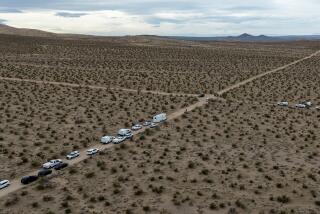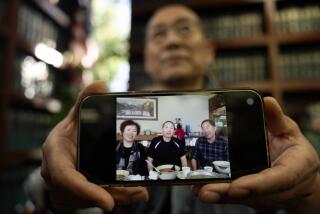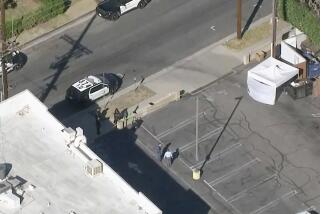Suitcases Seen as Clue in 4 Deaths : Mystery: Discovery of the luggage in a desert ravine supports the theory that a businessman killed his family, then himself, authorities say.
- Share via
SAN DIEGO — Two dust-covered green-and-gold suitcases and a battered black briefcase found in a heap in a desert ravine lend substance to the theory that mysterious British businessman Ian Spiro killed his wife and three children and then killed himself, authorities said Monday.
The bags--apparently filled with bills, bank statements, mail and other Spiro family documents but no clothes--were tossed into a remote gully by someone who felt no need to destroy all traces of the contents but wanted to make the paper-packed bags hard, if not impossible, to find, San Diego Sheriff’s Department officials said.
That someone is more than likely Spiro, officials said. His body was found last month in his Ford Explorer in Anza Borrego Desert State Park, three miles from where the bags were discovered during the weekend by hikers.
“If something else (besides a murder-suicide) was going on,” Sheriff’s Capt. James Marmack said, “I doubt we’d find these suitcases in the Borrego desert. They’d be in an incinerator, or otherwise lost forever. I don’t think you’d ever see them again.”
Spiro’s death, and the slayings of his family, have sparked a stream of sensational murder theories spiced with rumors of angry business partners, hired assassins and international terrorists.
On Nov. 5, neighbors found the bodies of Ian Spiro’s wife, Gail, 41, and the couple’s three children--Sara, 16, Adam, 14, and Dina, 11--at the family’s rented house in exclusive Rancho Santa Fe, north of San Diego.
Gail Spiro and the children died the same way, with a bullet to the head on Nov. 1 or 2, authorities have said.
Spiro, 46, a self-described commodities broker, was found dead Nov. 8 in the desert, a three-hour drive from Rancho Santa Fe. The county medical examiner’s office said he died of cyanide poisoning.
British tabloids have reported that Spiro had business and intelligence contacts in war-torn Lebanon. Some reports suggest that he may have played a role in introducing hostage negotiator--and eventual hostage--Terry Waite to the Shiite kidnapers of U.S. and British hostages in Beirut in the 1980s.
The San Diego County Sheriff’s Department has declined to rule out any possibilities. But detectives, who quickly labeled Spiro a suspect in his family’s deaths, have focused on the likelihood of murder-suicide amid speculation that financial pressure drove Spiro over the edge. He was falling behind on car payments, grocery bills and the $5,000 monthly rent.
It is unlikely that the two suitcases and briefcase will resolve the mystery, detectives said, but Marmack called them “pieces to the puzzle.”
“We’re trying to figure out a motive for murder in these cases. We’re hoping there is something in these suitcases that will leave us with no doubt in our minds that Ian Spiro committed these murders and then committed suicide,” Marmack said.
Detectives have had only a brief look inside the bags, finding a slew of documents in some sort of order and “not in disarray,” and plan this week to inventory the three bags, Marmack said. The gun used to kill Gail Spiro and the three children has not been found, he said.
Both suitcases--green with gold stripes, black straps and gold-colored combination locks--bear the Bond Street label.
Four hikers found the bags about noon Sunday, 20 feet down a ravine off Calcite Mine Road, one mile north of San Diego County Highway S-22 in the desert park and three miles east of the canyon where Spiro’s body was found.
Calcite Mine Road is accessible only by a four-wheel-drive vehicle such as the Ford Explorer that Spiro was driving, Marmack said. “We feel Ian Spiro threw the bags into the gully,” he said. “When he did it, we’re not sure.”
Interest in the case is so intense that the Sheriff’s Department received 40 phone calls from media outlets by 8:30 a.m. Monday, inquiring about the bags. A couple hours later, detectives invited reporters and TV crews to take a look at the evidence.
More to Read
Sign up for Essential California
The most important California stories and recommendations in your inbox every morning.
You may occasionally receive promotional content from the Los Angeles Times.










